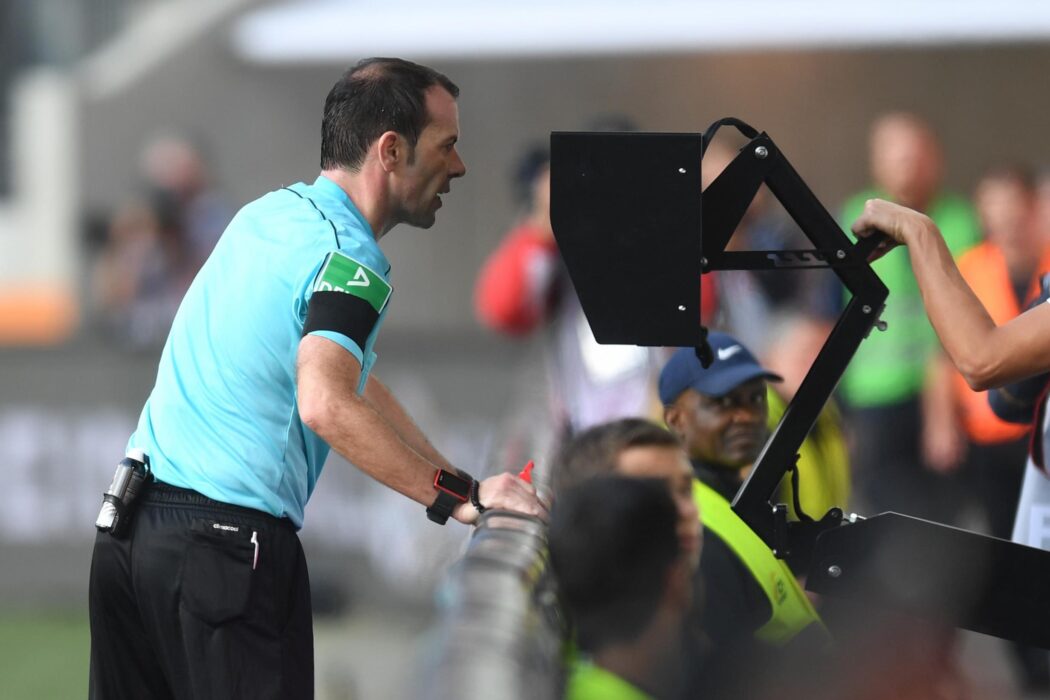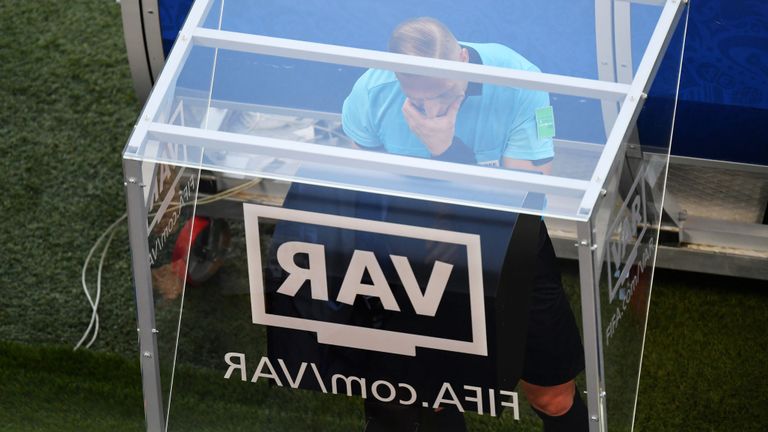
by Dery Aduda
I will try to answer three questions in this piece. What is VAR? How is it supposed to work and why are people on your time-line angry about it?
Intro
Let’s go back in time a bit. The most popular (and arguably the richest) sport in the world was stuck in the past. As other sports quickly evolved with the times and introduced technology to enhance fairness and improve performance, football seemed to be stuck in its glorious past. As other sports swiftly embraced technology, football was (and still is) holding on to the idea that, it’s far much better to have football fans arguing in bars, office cubicles and social media platforms on whether a decision made by a referee was right or wrong. Another narrative that has been used against technology is that it would do away with the human aspect of the game and let machines control everything.
What is VAR?
VAR, Video Assistant Referee is an attempt by professional football to use video replays to assist referees in making the right decisions on the field of play. It’s main purpose is to correct wrong decisions made by the referee. It does this by providing the Video Assistant Referees with the best camera angles in the fastest possible time in order to make correct and consistent decisions. FIFA, the organization governing World Football, not the video game, enlisted Hawk Eye Technologies to provide it with the services of video replays. You might have seen the work of Hawk Eye in Tennis and Cricket. FIFA have been testing the technology in its tournaments for close to two years now.

How does VAR work?
In this World Cup, as football matches are played in various cities in Russia, FIFA have set up a room at the tournament’s International Broadcast Centre in Moscow where referees (in full kit and only missing the whistle/flag) can replay videos of particular incidences in those matches. Suppose an incident happens during the game, the VAR team would contact the referee officiating that football match and inform them that a decision requires a review. Alternatively, the referee could also request the VAR control room to review a decision. The VAR team would then advise the referee via a headset on what the replays show. The referee would then view a video replay of the incident on a TV screen mounted on the side of the pitch. Based on the replays, the referee would then decide to stick to his original decision or change it on review and advice from the VAR team.
The decisions to be made using VAR are only 4. FIFA describes them as as game-changing decisions
- Determine whether there was an infringement that will mean a goal should not be awarded. For example, a player might have handled the ball while controlling a pass, or the ball might have gone out of the field of play in the build up to the goal.
- Sendings Off (Red Cards) – Determine whether a player was rightly or wrongly shown a red card. Or whether an incident deserving of a sending off was missed by the referee
- Penalties – To review whether a penalty decisions is awarded or denied correctly
- Mistaken Identity – The referee cautions or sends off the wrong player, or is unsure which player should be sanctioned. The VAR will inform the referee so that the correct player can be disciplined.
So in theory, VAR is pretty straight forward. It is meant to review only four major incidents that may occur anytime during a match. Thats where the simplicity ends and the confusion begins.
Why are people on your time-line angry about VAR?
People on the internet do not like complications. People on the internet are generally angry. And people on the internet have opinions. Three of the four areas covered by VAR, are left to the INTERPRETATION of football laws by the referee. Remember, whatever the referee decides or however he interprets the law, is final. What might be considered an infringement by one referee, player, coach or fan, might not be considered as one by the other. And when it comes to decisions that lead to penalties, red cards and infringements, the interpretations are as varied as there are social media platforms. This was evident in the penalty awarded to Iran when they drew with Portugal and the penalty denied Nigeria when they played Argentina in the Group stage of the World Cup.
Hawk-Eye may have developed the most sophisticated vision processing technology in sport which enables them and us to track a football to the millimetre but if the laws that are applied to the use of that technology are ambiguous, you are going to have more people angry at the technology and the referees. Because of this, the world of football will continue to be divided in the middle. Those who are for VAR and those who are against.
Remember, this is still an experiment to determine if ‘the implementation of VARs improves the game’. Currently, top level referees get about 98% of the decisions right. However, it’s the 2% that VAR is supposed to help improve. That 2% that referees get wrong, could mean the difference between winning and losing.







